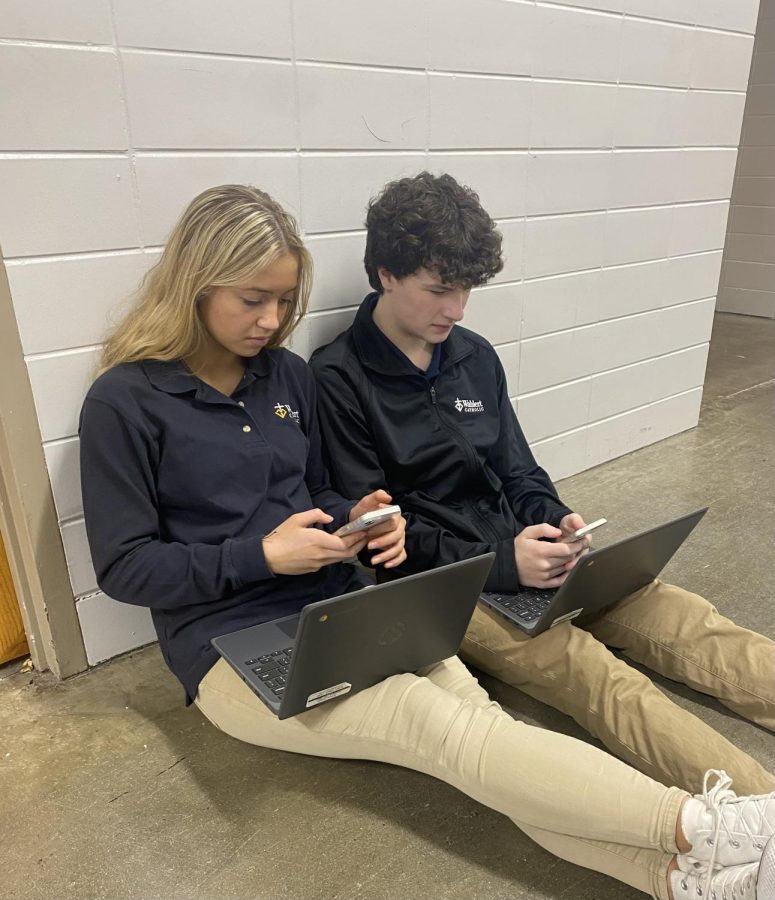To screen or not to screen?
When it comes to technology in the classrooms, students often find themselves being tempted to go on their phones. This often leads to students not understanding what they are learning or not getting work done. This is an everyday occurrence where students are having to balance their education with their screen time.
Many students are tempted to look at their phone because it is right in front of them. This is more common with underclassmen, as they are entering high school and aren’t used to balancing their screen time and education. Upperclassmen have gone through the struggle and learned ways to deal with the distraction.
“It definitely used to affect my education, but as time went on, I feel that I have learned better time management skills,” said Grace Kluesner, ‘23.
“I don’t think my education is affected that much, personally. I am able to multitask and focus on what I need to be learning at that time,” said Chris Schmitt, ‘24.
On the other hand, some underclassmen admit that having their phones in front of them has made it harder for them to learn.
“I think it affects my education because I’m not always paying attention and I am more focused on what’s on my phone instead of what I am learning,” said Thomas Mahoney, ‘25.
When comparing upperclassmen and underclassmen screen times, it shows that underclassmen are on their phones more. According to “OFS Health Care”, the average number of hours for upperclassmen to be on their phones is between 6 and 7 hours, while underclassmen is around 9 hours.
Although their phones may be affecting them now, there’s still time to break this bad habit.






